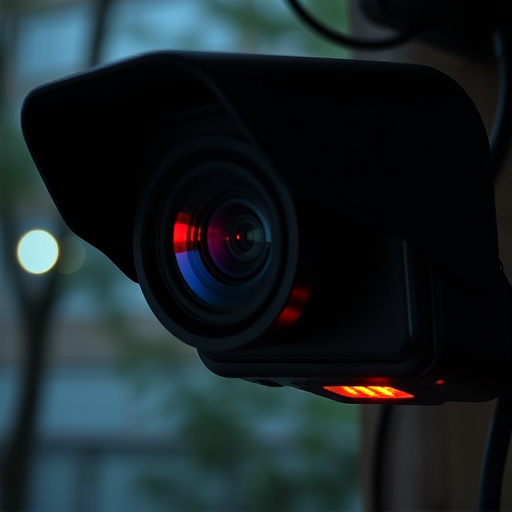When setting up Nanny Cam Placement Tips for your home, balance convenience with legal privacy rights. Check local laws, discuss camera placements openly with tenants, and regularly review security measures. Target high-risk areas like behind mirrors or within electrical outlets, but avoid private spots unless necessary. Place cameras in high-traffic areas at eye level, inform household members, and consider hidden options. Follow ethical best practices for rental properties, including open communication and adherence to local surveillance laws. Utilize advanced technology discreetly for enhanced home security while respecting privacy rights.
In today’s digital age, homeowners increasingly turn to secret surveillance through hidden cameras, particularly in rental properties. While this technology offers enhanced security, it raises critical legal considerations and privacy rights issues. This article guides you through identifying high-risk areas for surveillance in rentals, offering essential Nanny Cam placement tips for optimal safety, and exploring ethical concerns for homeowners. We delve into advanced technology options, highlighting their impact on rental security while promoting responsible practices.
- Understanding Legal Considerations and Privacy Rights
- Identifying High-Risk Areas for Secret Surveillance in Rentals
- Nanny Cam Placement Tips for Optimal Safety and Efficiency
- Ethical Concerns and Best Practices for Homeowners
- Advanced Technology Options and Their Impact on Rental Security
Understanding Legal Considerations and Privacy Rights
When considering nanny cam placement tips for your home, it’s crucial to balance convenience with legal considerations and privacy rights. In many jurisdictions, hiding cameras in rental properties without explicit consent from tenants is illegal, violating their right to privacy. Before installing any surveillance devices, consult local laws and regulations regarding hidden camera use; these rules vary significantly between regions.
Tenants have the expectation of privacy within their living spaces, so placement of nanny cams should be open and transparent. Discuss with your tenant the specific areas where you’d like to install cameras for safety or supervision purposes, ensuring they understand and agree to these arrangements. Regularly reviewing and updating your home security measures, including camera placements, can help maintain a safe environment while respecting everyone’s legal rights and privacy.
Identifying High-Risk Areas for Secret Surveillance in Rentals
When it comes to identifying high-risk areas for secret surveillance in rental properties, especially homes where families or individuals with sensitive information reside, it’s crucial to think like a potential culprit. Common hiding spots for hidden cameras, also known as nanny cam placement tips, often include areas that offer privacy and line of sight. This could be behind mirrors, inside clocks or other decorative items, under furniture, or even within electrical outlets. These locations provide an unobstructed view while remaining relatively unseen.
Additionally, looking for signs of previous surveillance equipment, such as holes in walls or ceilings, suspicious wiring, or unusual mounting hardware, can offer valuable clues. It’s essential to remember that technology is constantly evolving, so staying informed about the latest advancements in hidden camera detection is vital for ensuring a safe and private home environment.
Nanny Cam Placement Tips for Optimal Safety and Efficiency
When setting up a nanny cam in your home, strategic placement is key for both optimal safety and efficiency. Start by identifying high-traffic areas where children spend significant time, such as playrooms, kitchens, or hallways. These locations allow you to monitor activities and ensure supervision during meals, playtime, and transitions between rooms. Consider mounting the camera at eye level or slightly below to capture clear, unobstructed views without appearing intrusive.
Avoid placing nanny cams in private areas like bedrooms or bathrooms unless absolutely necessary for safety purposes and always inform all household members about their presence. Think about hidden placement options like faux electrical outlets or decorative frames that discreetly house the camera while maintaining a cohesive home aesthetic. Regularly review your footage and adjust camera positioning as needed to adapt to changing routines and ensure continuous, effective monitoring.
Ethical Concerns and Best Practices for Homeowners
While nanny cams can offer peace of mind for homeowners, particularly those with young children or elderly family members, their use raises significant ethical concerns. The installation of hidden surveillance devices in rental properties should be approached with utmost care and transparency. Homeowners must consider the privacy rights of tenants and ensure any monitoring is conducted responsibly.
Best practices dictate open communication with residents about the presence of cameras, their purpose, and the scope of data collected. Nanny cam placement tips suggest strategically positioning devices in common areas only, avoiding private spaces like bedrooms or bathrooms. Regular review and strict adherence to local laws governing surveillance are essential to maintain a safe yet ethical environment for everyone involved.
Advanced Technology Options and Their Impact on Rental Security
In today’s digital era, advanced technology has significantly enhanced rental security measures. One of the most prevalent and effective tools is the nanny cam—a small, discreet camera designed for placement in strategic locations within a home to monitor activity. These devices offer real-time video streaming and recording capabilities, allowing landlords and tenants alike to stay informed about any unusual occurrences.
The impact of these advanced tech options is profound, as they provide an extra layer of protection for both property and residents. Nanny cams can be strategically placed in high-risk areas like hallways, living rooms, or even bedrooms, offering valuable insights into potential security breaches or malicious behavior. Their subtle nature ensures that they remain unnoticeable, acting as silent guardians that contribute to a safer home environment.
In light of the above discussions, it’s clear that while technology offers advanced options for rental security through nanny cam placement tips and other innovative methods, homeowners must also respect tenants’ privacy rights and navigate legal considerations. Balancing safety and ethical concerns is paramount. Understanding high-risk areas and adopting best practices can ensure a secure living environment without infringing upon personal freedoms. As the use of surveillance technology continues to evolve, staying informed and adhering to responsible guidelines will be key for both homeowners and renters alike.
